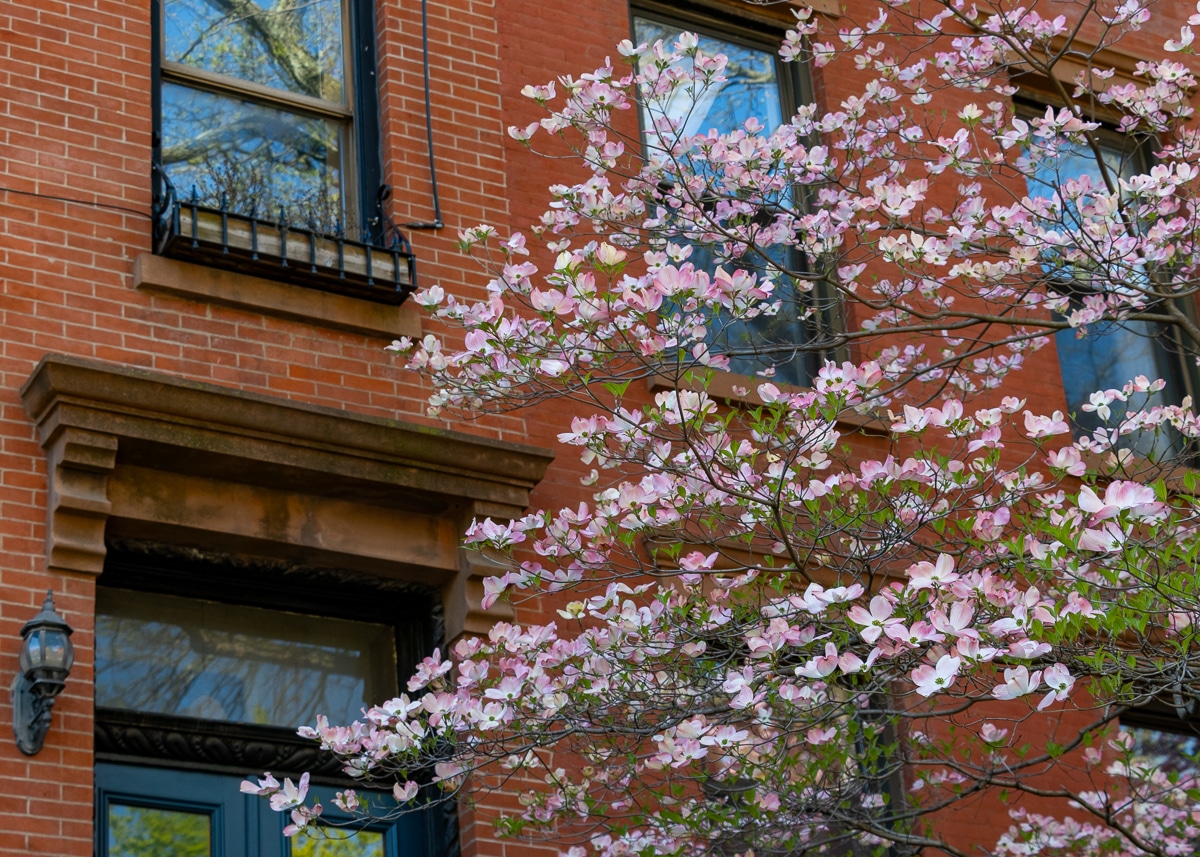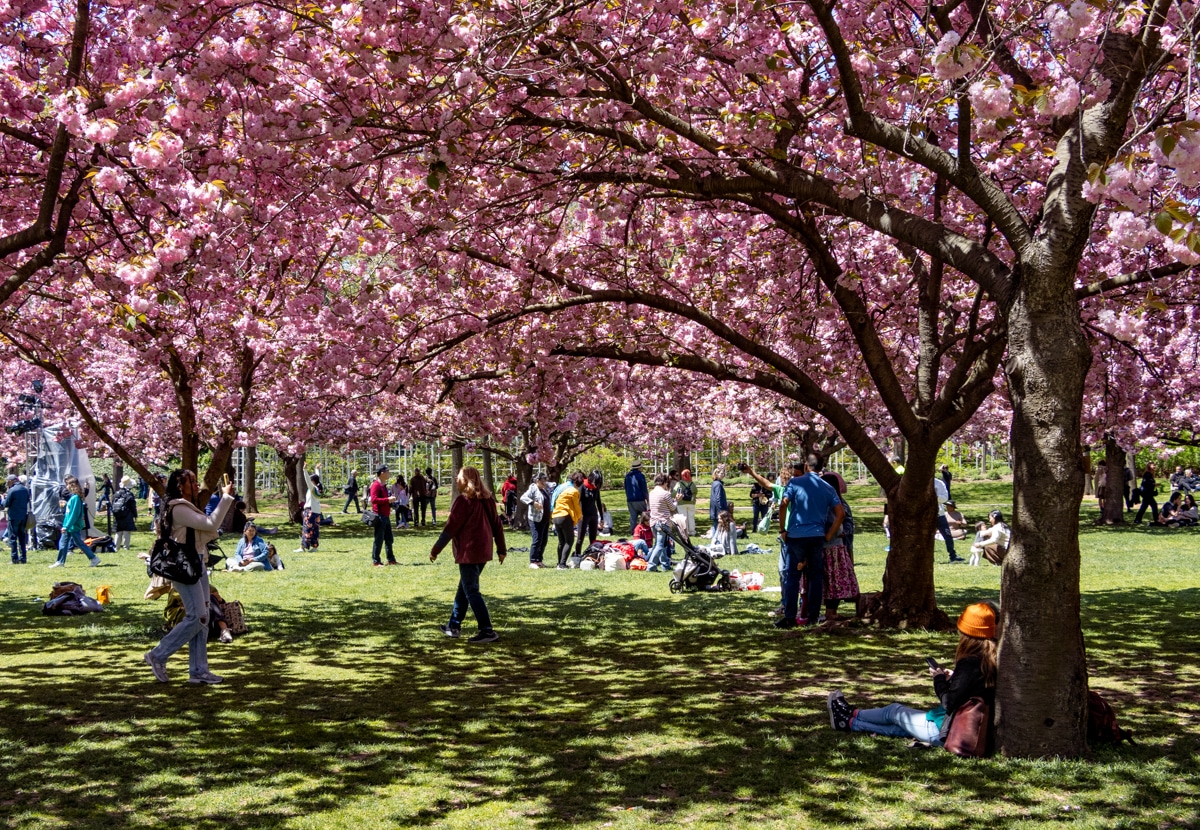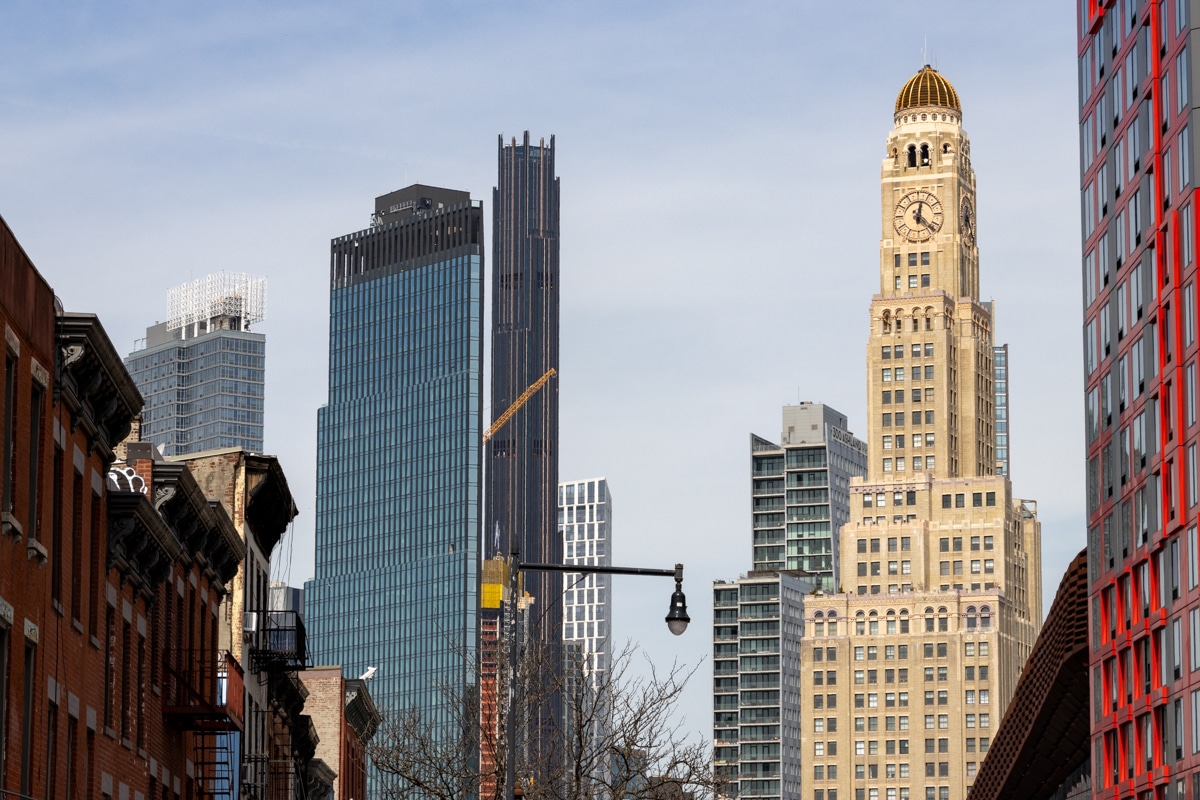Past and Present: The Brooklyn Club
A look at Brooklyn, then and now. Somewhere around the 1850s, this house, which had a different numbering then, was built. This was a time of great building in the Heights, when many of Remsen Street’s great brownstone mansions were built for the wealthy industrialists, merchants and financiers who were making their fortunes below on…

A look at Brooklyn, then and now.
Somewhere around the 1850s, this house, which had a different numbering then, was built. This was a time of great building in the Heights, when many of Remsen Street’s great brownstone mansions were built for the wealthy industrialists, merchants and financiers who were making their fortunes below on Brooklyn’s docks, or across the river in Manhattan. This was certainly some mansion; 50 feet wide and 88 feet long, a whopping 15,000 square feet of house. The photograph from 1935 shows the house as it must have looked when it was built; with Italianate brownstone window hoods and sills, a projecting oriel above the front door, attic dormers peeking out above, a large, rugged cornice, and an elegant front stairway leading to the massive front door.
Brooklyn’s city directories show that in 1858 the house belonged to Terrence McDonald, a hemp manufacturer. Since shipping made many of the fortunes in the Heights, it seems fitting that a man who manufactured rope would certainly be wealthy enough to build and own such a house. Rope was as indispensable in the 19th century as steel or plastic are today.
As Brooklyn grew in influence and wealth, its favored sons wanted to have the same amenities as their colleagues in Manhattan, and one of the most popular and elite activities was membership in an upscale and exclusive club. Manhattan had many such establishments, and Brooklyn wanted them too. After the Civil War, and by the end of the 19th century, there were all kinds of clubs; social, athletic, religious, fraternal, military and whatever other reason one could think of for gathering.
The Brooklyn Club was founded in 1865 by some of the Heights’ elite. Its first president was W. E. Pierrepont, and the membership was a Who’s Who of Brooklyn’s wealthiest and most influential men. Their first official headquarters was the former Greenleaf School, a private seminary for girls, on the corner of Pierrepont and Clinton Streets. It was a large building that was perfect for a club, and was soon kitted out with well-appointed club rooms, a billiard room, card room, dining room, library and other rooms for members and their guests.
Wives were invited to special occasion events, but this was a man’s world, where a busy man could set down the burdens of commerce and relax and talk business, with good food, fine cigars and an excellent whiskey. The club’s official opening night was a grand affair, with catering by the famous Manhattan restaurant, Delmonico’s, with Mr. Delmonico himself in the kitchen overseeing the feast.
In 1894, the club had a scandal and a scare when its long-time bookkeeper was found to have two sets of books, and had embezzled over $6,000 from the club. He was only caught when the club decided to switch banks, and the new bank notified the club’s officers of the shortage in their funds. The club believed in him so much, they thought it had to be clerical error, but the bookkeeper, Lewis Ryers, was in the wind. In correspondence through family members, he asked if the club would “work something out,” but considering the membership was made up of lawyers, judges and businessmen, that offer was soundly rejected. The man’s fate is unknown.
The club stayed in their Pierrepont Street location until 1913, when they moved over to 131 Remsen Street. The club sponsored sporting events between other clubs, Ivy League college teams and amongst themselves with card tournaments, billiards, as well as a football and hockey team, and they also had a yacht club. Past presidents of the club included General George Wingate, the Surrogate Judge of Kings County in 1925. The Wingate neighborhood is named after him. Other members included Charlie Ebbets who hosted club outings at his ballfield, with Walter O’Malley joining the club after he took over the Dodgers.
Over the years, they saw club membership steadily drop, as the age of exclusive WASPy men’s clubs was more or less over. They didn’t admit women, blacks or Jews until the 1970s. Costs became too high as membership declined, and by 1994, the club only had four hundred members, down from six hundred, the maximum allowed, only ten years before. They decided to sell the Remsen Street house and move to smaller and more modest quarters. The club already had a buyer, the Brooklyn Heights Synagogue, which was just down the block. In 1995, the club moved out, and the synagogue took over the building. They paid $1.4 million for it. The synagogue remains to this day.
What was left of the club began meeting at Foffe’s, a popular Montague Street restaurant, known for its wealthy clientele and power dinners. When Foffe’s closed, the Brooklyn Club moved over to an upper floor of Gage & Tollner. In 1999, the membership voted 70 to 2 to shut down the club forever. They also voted to have the club name copyrighted, in order to prevent inappropriate use, and wanted to have an exhibit of memorabilia at the Brooklyn Historical Society. The Brooklyn Club, mighty gathering place of the elite men of Brooklyn Heights for 134 years, slipped quietly away into history.
At some point in its history, the façade of the building was stripped of all of its Italianate ornament, which is really a shame, especially when you see the “before” photos. This is still an impressive building, but before, it was a really beautiful and impressive building. It happened when the club had the building. What were they thinking? This is a fine example of why landmarking is so important. GMAP




Related Stories
The Bikers, Singers, Athletes or Riders? Which Long-Gone Social Club Would You Join?
Suzanne Spellen, aka Montrose Morris, Is Writing Brownstoner’s First Book
Past and Present: The Borough Park Clubhouse









What's Your Take? Leave a Comment